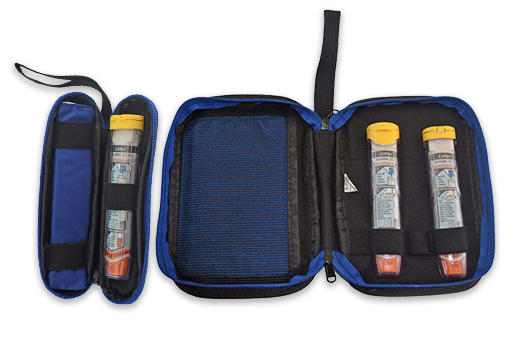Each EpiPen® Auto-Injector contains a single dose of adrenaline, which works quickly to help reverse the symptoms of anaphylaxis, also known as a severe allergic reaction.1
How to use EpiPen®
It’s best to ask your doctor or pharmacist to demonstrate how to use an EpiPen® Auto-Injector regularly.2 You and your family can also practise using a trainer device.
Watch our training video and ask your family and friends to watch too.
In an emergency, remember there are instructions on every EpiPen® Auto-Injector to guide you.
In summary:
- Ensure you (or the patient) are lying on the ground – if breathing is difficult, you or they can sit, but not stand or walk.
- Remove EpiPen® from the case.
- Hold EpiPen® in your fist with the orange end facing down.
- If helping a child, use one hand to hold them still and do your best to reassure them and keep them calm.
- Pull off the blue safety release.
- Press the orange end to the outer mid-thigh.
- Push down until a click is felt or heard and hold for three seconds, then release the EpiPen® Auto-Injector.
- Phone triple zero (000) for an ambulance.
- Phone a relative or emergency contact person.
- Hand the used EpiPen® Auto-Injector to the ambulance or emergency department staff.
NOTE 1: A second dose with a new EpiPen® Auto-Injector may be necessary if symptoms have not improved in five to fifteen minutes.
NOTE 2: If assisting another person, CPR may be necessary at any time.
NOTE 3: Always give EpiPen® first, then asthma medication if required.3
Remember:
Blue to the sky. Orange to the Thigh.
























